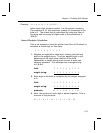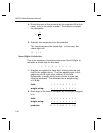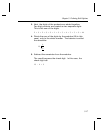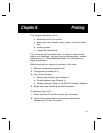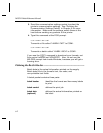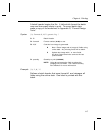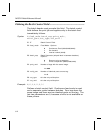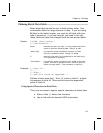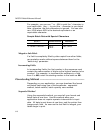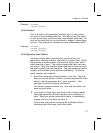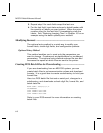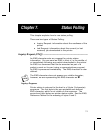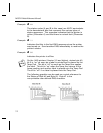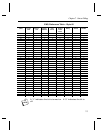
Defining Batch Data Fields –––––––––––––––––––––––––––––––––––
Batch data fields should be sent in field number order. Use
continuation fields for large amounts of data. If you are using
N (New) in the batch header, you must list all fields with your
data in sequence. If you are using U, you need to list only
those fields and data that changes from the last printed batch.
Syntax field#,"data string" p
C,"continuation" p
field# Identifies the text, bar code, or non-printable text field in
which to insert the following data. Range: 0 - 99.
"data string" Provides the actual information to appear in fields.
Enclose in quotation marks. Range: 0 - 2710.
C Identifies information to be appended to the data string.
(This parameter is optional.)
"continuation" Provides the actual information to be added to the batch
packet. Enclose in quotation marks. Use this option to
break up longer fields. (This parameter is optional.)
Example 1,"Size 12" p
2,"" p
3,"Blue" p
C,"and this would be appended." p
Defines a batch data field. "Size 12" prints in field #1, a blank
line appears in field #2, "Blue and this would be appended"
prints in field #3.
Using Special Characters in Batch Data
There are two ways to specify special characters in batch data:
✦
Place a tilde (~) before the character
✦
Use a tilde with the decimal ASCII equivalent
Chapter 6. Printing
6-5



